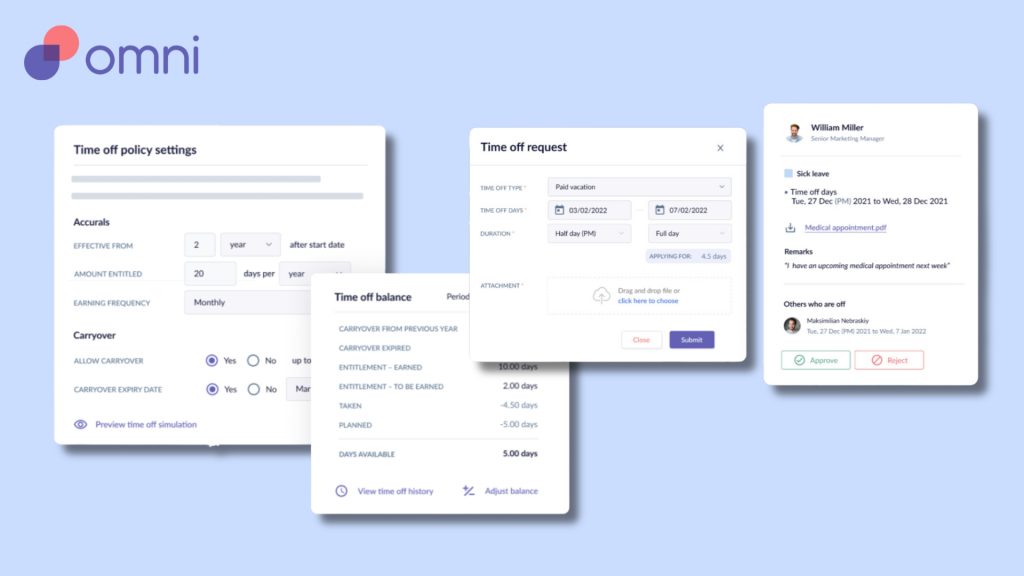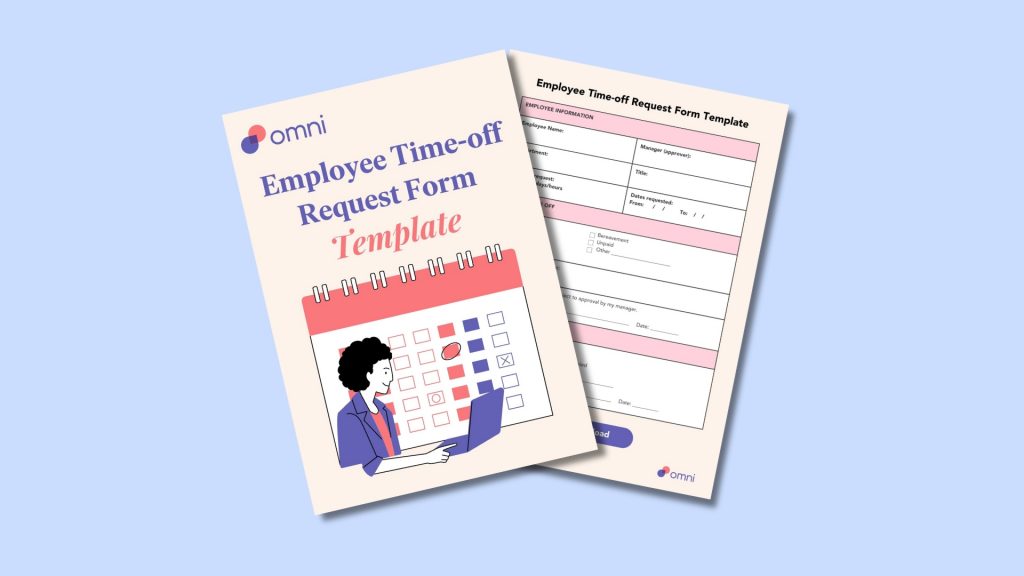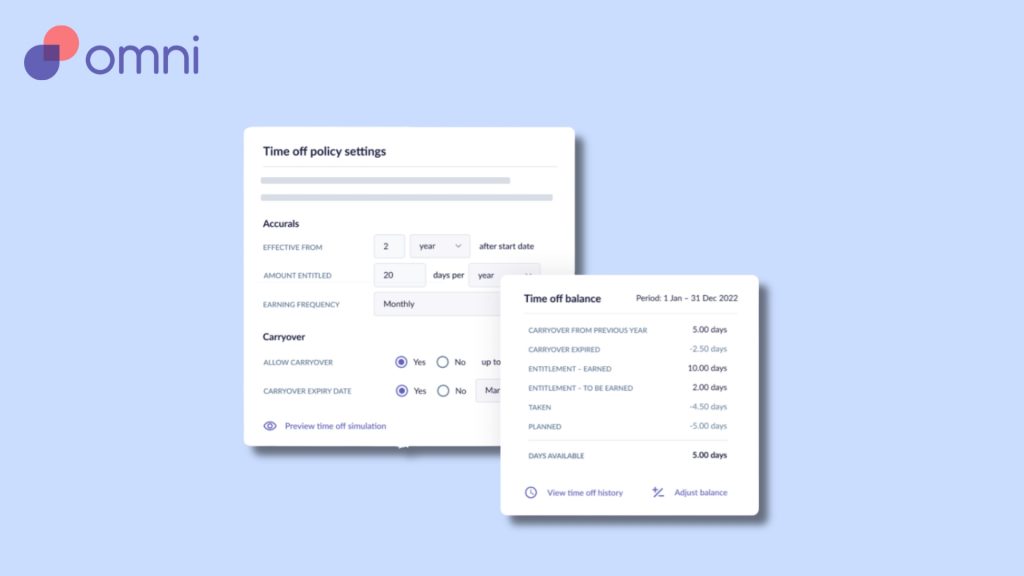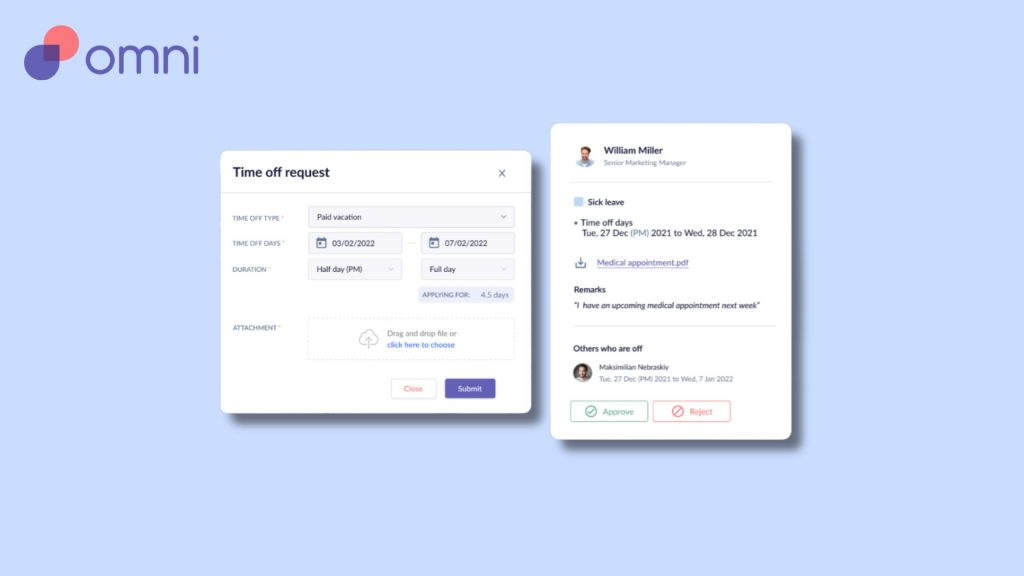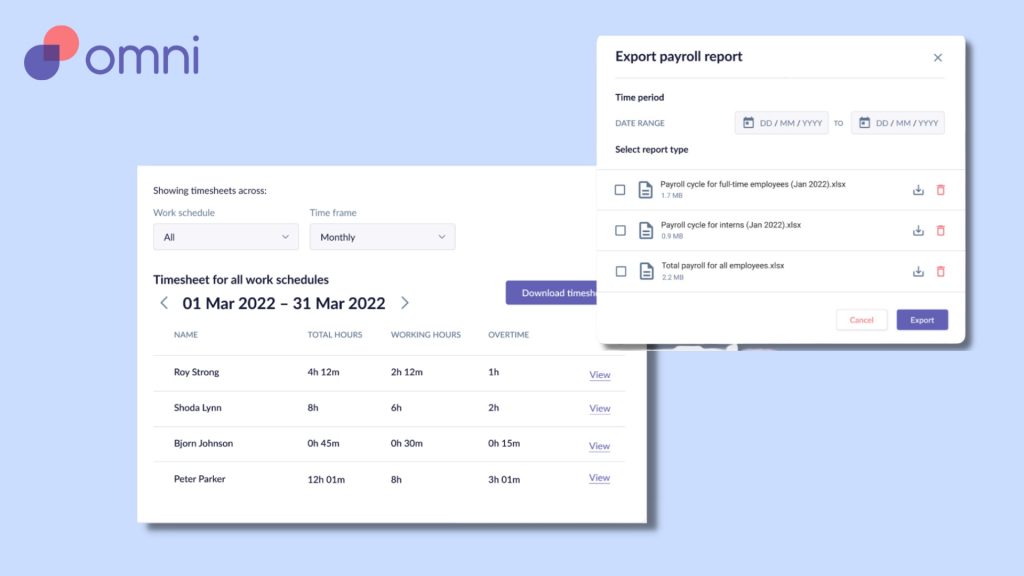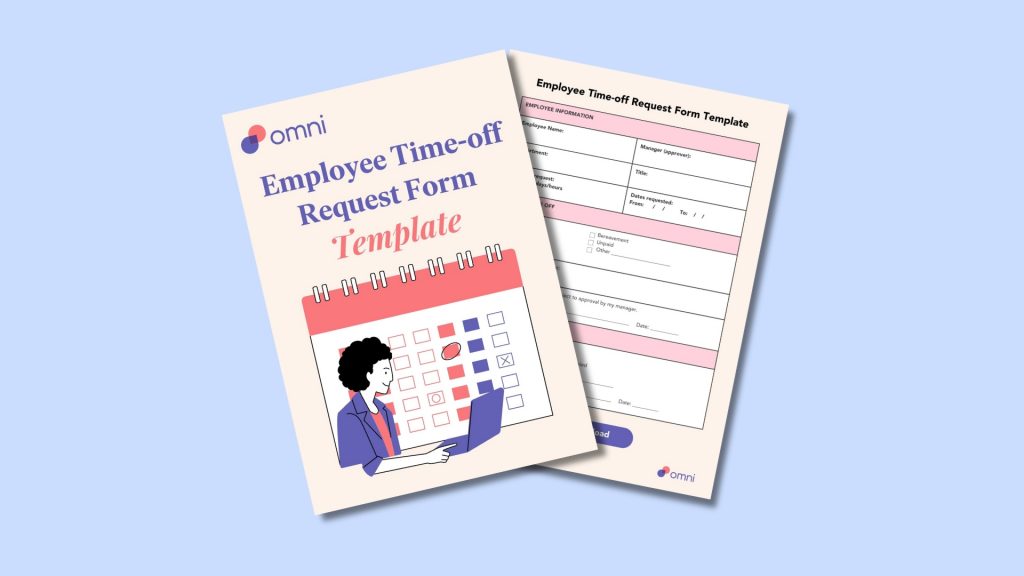Paid time off, otherwise known as PTO, is a key element of the employee experience. It allows employees to recharge, take breaks, and come back with a refreshed and productive mindset. By allowing your workforce time to attend to their personal needs, you are helping them to stay present and engaged while at work (while helping curb employee burnout). Ultimately, PTO works out to be a win-win for both employees and the organizations that employ them.
The key to any great employee benefit comes down to the ease of access and use. Like most HR functions, a clear, easy-to-use system is required to ensure initiatives run smoothly. Employee leave management does exactly that, facilitating the tracking, administering, and compensating of employee leave, to ensure employees are getting the rest and work-life balance they need, while keeping functions like team collaboration, payroll, and compliance efforts on track.
What is employee leave management?
Employee leave management involves the processes and policies that govern the requests and administration of employee time-off; a benefit often offered by employers as a part of employee compensation. These processes include reviewing and approving or denying employee time-off requests, communicating and managing employee’s schedules, tracking time off allowances, and administering paid benefits.
Employee leave includes vacation, sick time, family and personal leave, and bereavement, and can be both paid or unpaid, depending on your company’s policies.
To assert the importance of leave for employees, Pew Research Center says, “About six-in-ten workers (62%) say it’s extremely important to them personally to have a job that offers paid time off for vacations, routine doctor’s visits or to deal with minor illnesses, larger than the shares who say the same about having employer-paid health insurance (51%).”
The task of employee leave management falls under the core responsibilities of the HR department, and can be managed manually, electronically or outsourced through a trusted third party.
Why is it important to have a leave management system?

When well implemented, a leave management system balances staffing and employee demands on one side and legal and business policy compliance on the other. In that sense, it supports both business and employee success.
Accurate records keeping
Employee leave management includes keeping records of leave that employees take so that they have a clear understanding of how much leave is available to them throughout the year. This need becomes abundantly clear during payroll and offboarding, as providing records and having clear policies prevents disputes over accumulated earned leaves.
A leave management system allows HR, management, and employees a clear view of how much leave is available and how much has been taken, simplifying leave requests and payroll.
Not to mention, tracking enables you to enforce your leave policy justly, cutting down revenue losses. That’s because the existence of records means you won’t pay for absences (non-completed work hours) that are not covered under your company’s leave policy.
Compliance
Depending on the country you are operating in, you may have specific legal requirements to adhere to around employee leave. Some countries require a minimum amount of parental leave, paid or unpaid time off in relation to hours worked, or certain federal holidays observed by companies. Leave management systems allow you to input these unique requirements and ensure your organization adheres to local labor laws.
Labor management
Leave management systems help to organize employee schedules, offering a straight-forward view into who is working and who is taking time off, reducing instances of under-staffing or conflicts across teams that may affect project deadlines, staffing needs, or other team effectiveness considerations.
Reduced administrative workload
An automated leave management system relieves HR teams of the administrative burden that so often accompanies processing leave requests. From processing requests, tracking employee schedules, calculating leave balances, and processing payroll, leave management systems digitize and automate these tasks, reducing the time spent managing leave and eliminating time-consuming administrative work for HR and management.
Challenges of Employee Leave Management
When you establish an employee leave management system, understanding the potential challenges helps you distinguish a good system from a subpar one and improve how your HR department handles this responsibility.
Tracking leave
Although it may look simple enough, keeping track of employee leave can present its challenges. With multiple employee schedules, leave allowances, and types of leave to manage, you’ll need to document their leave types and confirm that they’re compliant as well as have enough balance to cover their leave. It’s easy to mis-calculate, fail to record, and over promise leave that may lead to gaps in workload coverage if you’re not careful.
There’s also the issue of compliance when tracking leaves. You must know which time-off your employees are entitled to and when they’re entitled to them (depending on local and state labor laws and internal policies). Otherwise, your tracked leaves may land you in legal trouble.
Still using manual leave processes?
Administering payroll
Your payroll management system is intertwined with your leave management system. If there are errors, inconsistencies, and miscommunications in your leave management records, they’ll reflect on your payroll processes. This might result in mixups between paid and unpaid leaves and inaccurate compensation.
Ensuring you pay employees for their PTO is necessary, and solidifies their trust in your company. On the other hand, ensuring you don’t accidentally pay them for unpaid leave reduces revenue losses for your business.
Communication
Communicating company policies clearly can be a challenge within leave management. Whether policies are unclear, difficult to find, or poorly communicated, it can cause a fair bit of confusion for all parties. Further, communicating leave across teams is essential for collaboration and clarity within your organization, and failing to do so effectively can result in missed opportunities and tasks falling through the cracks.
Guide to Developing a Leave Management System
Now that you’re aware of the importance and challenges of an employee leave management system, let’s look at the steps you should follow to build a comprehensive and effective leave management strategy.
Familiarize yourself with local laws and regulations
The first and arguably most important step in setting up your leave management system is to understand your local labor laws and government mandated regulations. Research local, state, and federal labor laws in your location and that of your employees to ensure compliance.
There are a wealth of resources available from government websites to blog posts and templates available for HR teams to leverage as tools for remaining compliant and informed.
Omni’s blog offers a variety of localized advice and information such as:
- Hong Kong Payslip Templates
- How to File a Hong Kong Employer’s Return
- Understanding Hong Kong’s Rental Reimbursement Scheme
- Itemized Payslip Template Singapore
- Singapore Employment Pass: Updates & Requirements
- Payroll Singapore Reference Guide
- Understanding Malaysia’s Employment Act
- How to Apply, Claim, and Select Training Programs for HRDF Malaysia
Automated leave management systems are often equipped with the knowledge and modules to help your team navigate compliance laws and regulations, helping to reduce the likelihood of errors that can result in fines or larger legal troubles.
Outline leave policies
To prevent communication challenges, outline your policies clearly. Make them transparent, comprehensive, and balanced between employee needs, business interests, and employee satisfaction. Make clear whether you offer a traditional PTO benefits package or follow an unlimited time-off policy. Your employee leave policy should include:
- The holidays your company acknowledges
- The available leave types (such as parental leave, sick leave, casual leave, emergency leave, and jury duty)
- How to request time-offs
- How to handle unused time (whether it’s lost, used, or rolled over)
- How leave time is deducted
- How time is accrued in your company
Making leave policies widely accessible and clear for your teams empowers employees to utilize their benefits, helps reduce confusion, and brings clarity for both employees and their managers.
We recommend outline your leave policy within your employee handbook, going over this information during employee onboarding, and making the policy easily accessible by storing it in your HR database for quick reference.
Develop a tracking system
You need a system to track employee leave, remaining balances, and the percentage of employees not using their PTO. This system should also track absenteeism and leave-taking patterns to help flag disengaged employees for early intervention.
Tracking employee leave can be done either using manual or automated systems. HR personnel can manually track leave transactions and the net leave balances for all leave types; however, it can be a time-consuming and error-prone process.
Automated systems subtract time from an employee’s leave balance after each approved request. Additionally, such a digital leave management system supports the addition of set PTO amounts every pay period, which keeps the total accurate and updated. They also help establish pre-defined policies for employees living under different jurisdictions.
Tracking helps facilitate clear communication, ensures accurate and timely payroll, and provides valuable analytics to help determine insights around employee engagement.
Streamline Your Leave Management With Omni
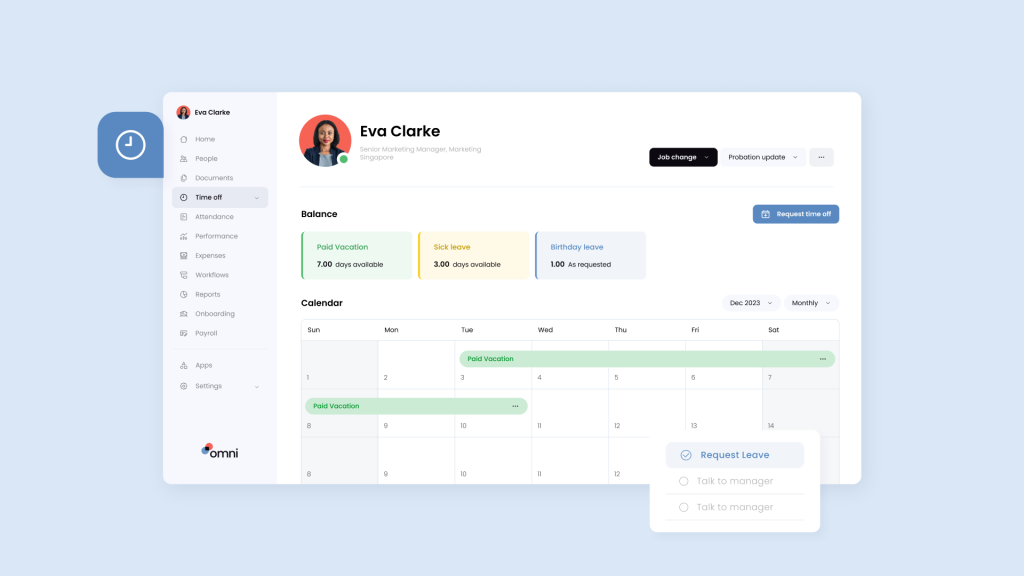
Leave management systems offer a practical solution to reducing administrative work and streamlining People management processes.
Omni’s time off management capabilities help managers and HR teams swiftly navigate employee leave management. Omni’s platform allows you to approve leave applications on the go and keep track of who’s in and out of the office with at-a-glance scheduling.
Our employee self-service portal empowers employees to submit their time off requests, which automatically routes to the appropriate manager thanks to customizable approval workflows. With automated calculations, employees and managers can easily view leave balances in real-time, and track how many vacation days they have left without having to go through HR.
Our localized solutions and inter-connected system integrates your leave management efforts with payroll processing, facilitating automatic, accurate calculations and compliance with local regulations for various regions.
Not ready to switch to an automated system? Download our free Employee Time Off Request Form template to help streamline your manual system.



